
How to Use Jetson Orin Nano: Examples, Pinouts, and Specs
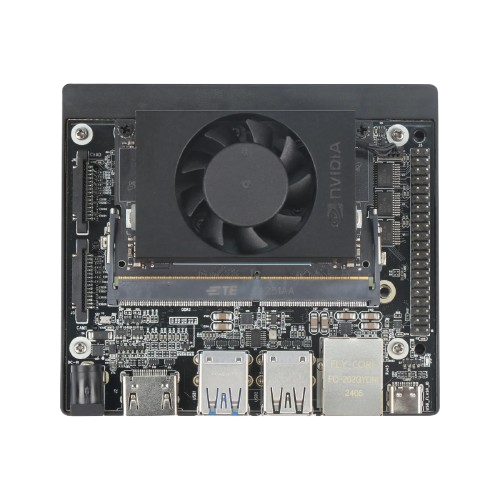
 Design with Jetson Orin Nano in Cirkit Designer
Design with Jetson Orin Nano in Cirkit DesignerIntroduction
The Jetson Orin Nano is a compact AI computing platform designed for edge devices, featuring a powerful GPU and CPU architecture that supports advanced machine learning and computer vision applications. It is part of NVIDIA's Jetson family, offering high performance in a small form factor, making it ideal for robotics, IoT, smart cameras, and other AI-driven applications. With its energy-efficient design, the Jetson Orin Nano is well-suited for deployment in environments where power consumption and space are critical considerations.
Explore Projects Built with Jetson Orin Nano
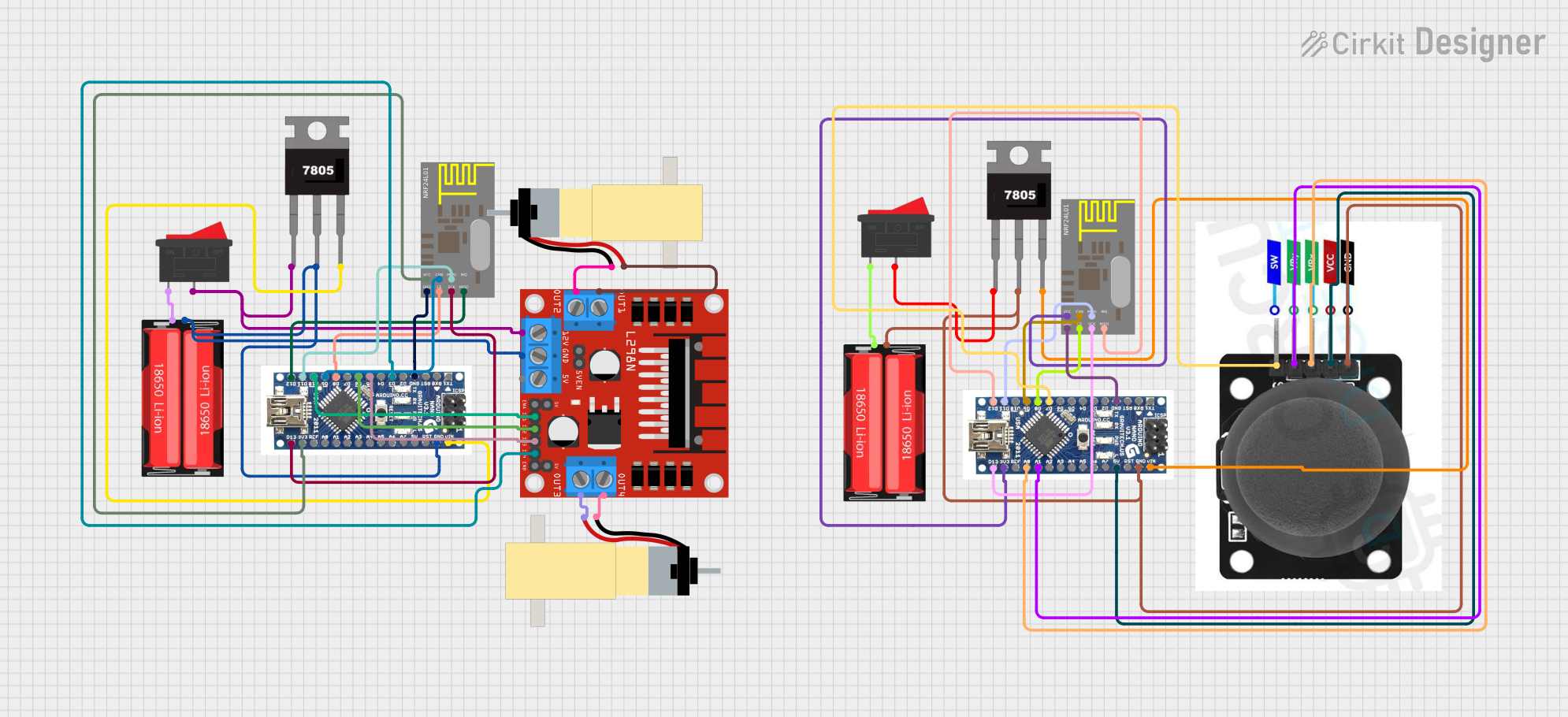
 Open Project in Cirkit Designer
Open Project in Cirkit Designer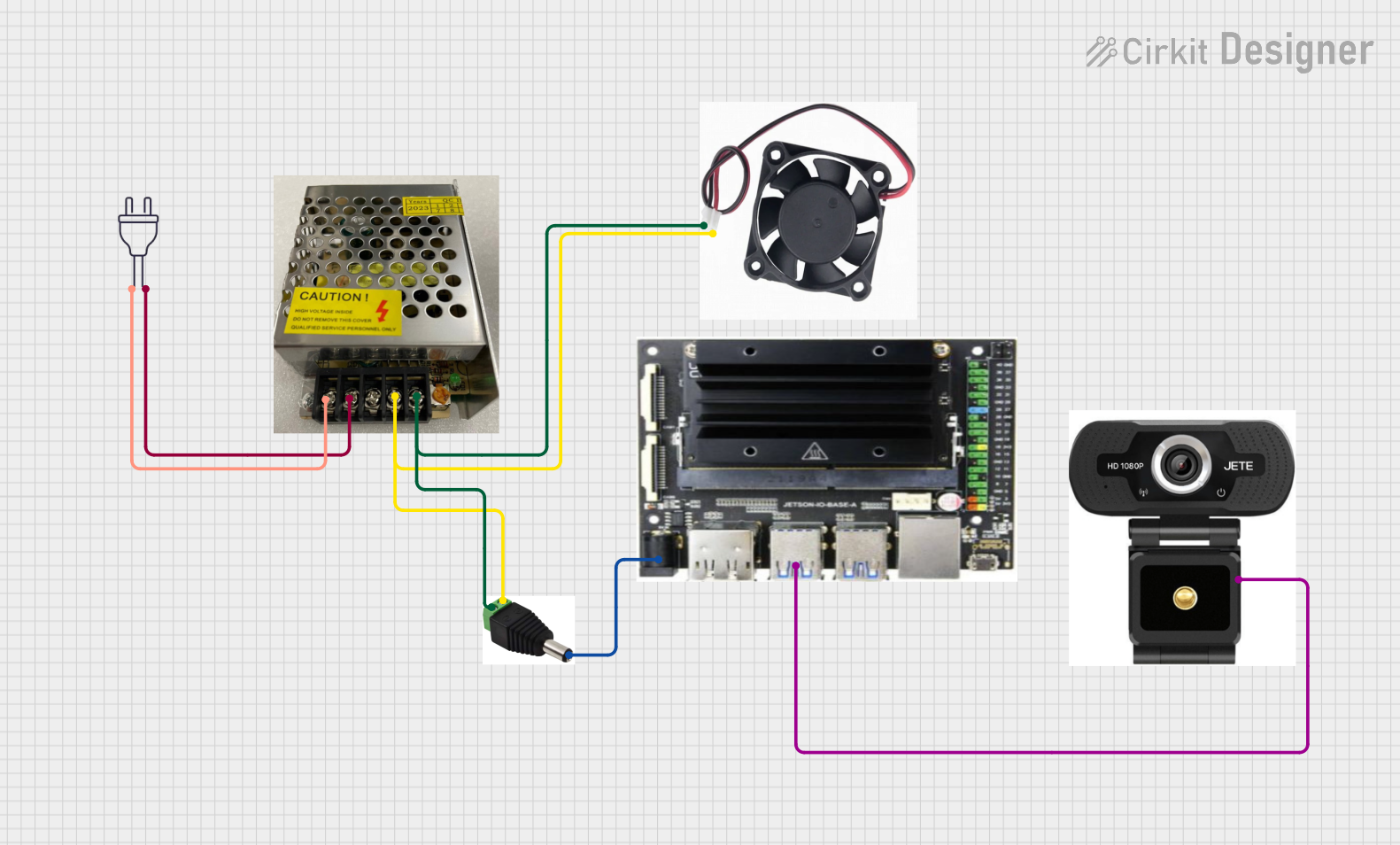
 Open Project in Cirkit Designer
Open Project in Cirkit Designer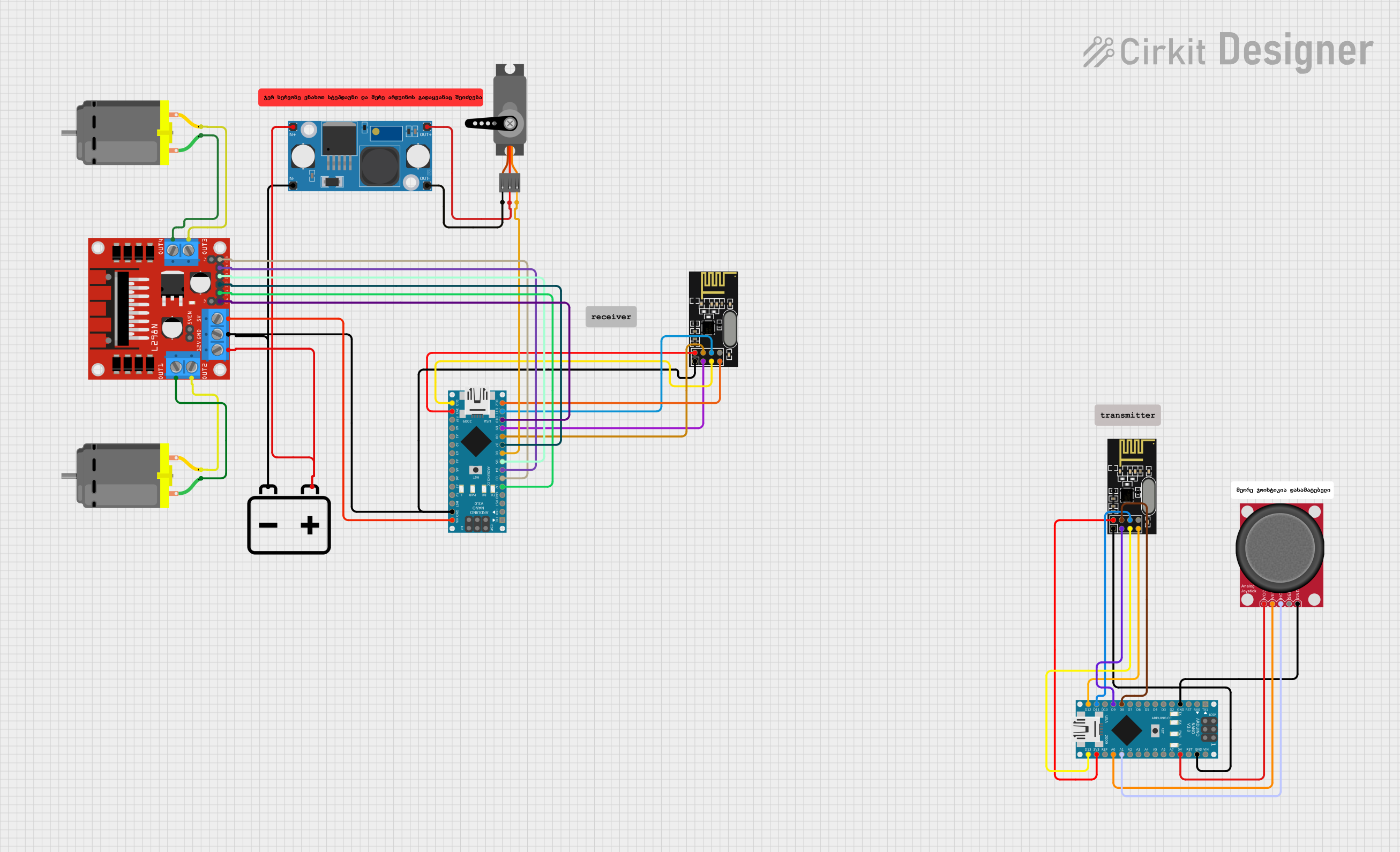
 Open Project in Cirkit Designer
Open Project in Cirkit Designer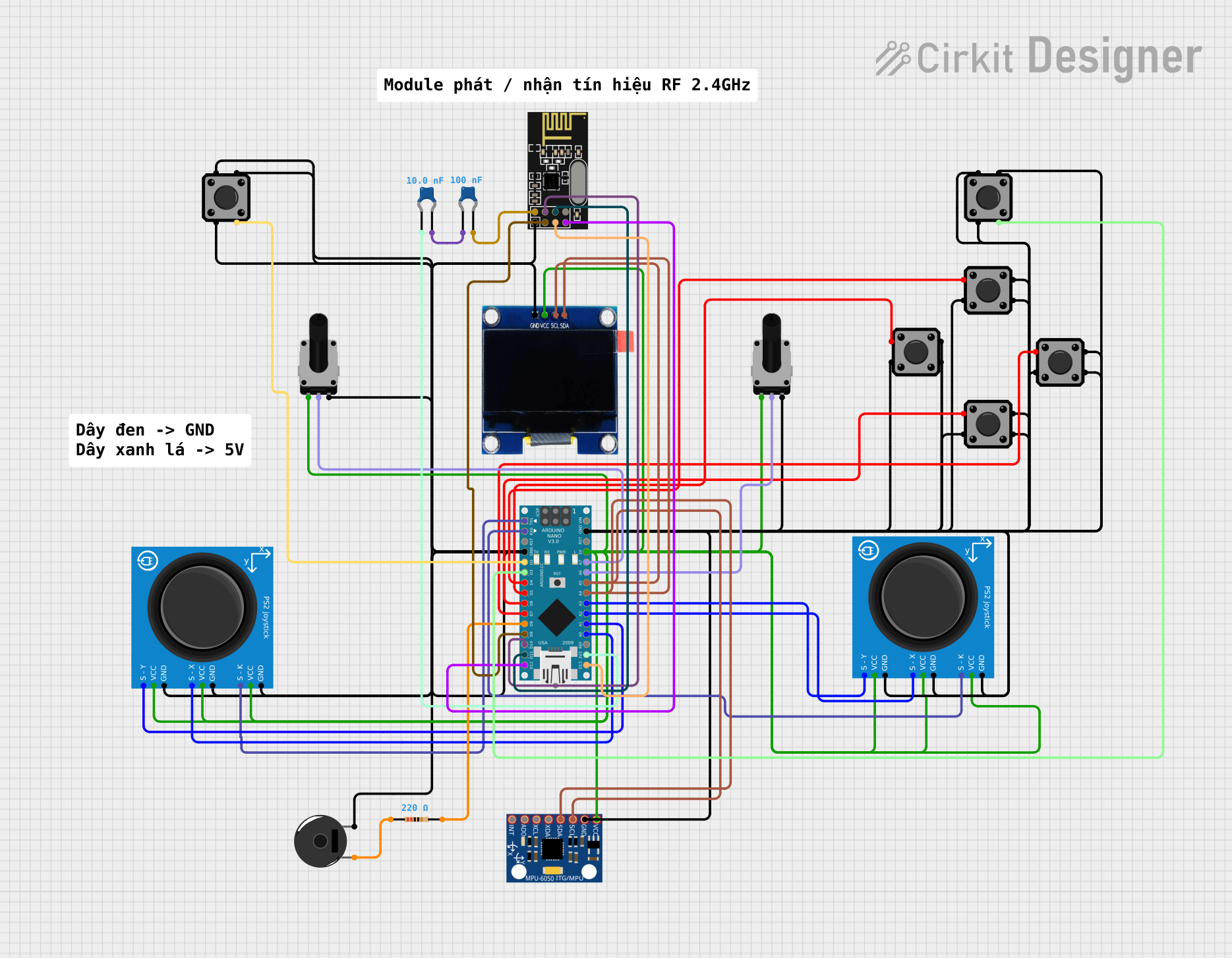
 Open Project in Cirkit Designer
Open Project in Cirkit DesignerExplore Projects Built with Jetson Orin Nano

 Open Project in Cirkit Designer
Open Project in Cirkit Designer
 Open Project in Cirkit Designer
Open Project in Cirkit Designer
 Open Project in Cirkit Designer
Open Project in Cirkit Designer
 Open Project in Cirkit Designer
Open Project in Cirkit DesignerCommon Applications and Use Cases
- Robotics and autonomous systems
- Smart surveillance and security cameras
- Industrial automation and control
- AI-powered IoT devices
- Edge computing for real-time data processing
- Natural language processing and speech recognition
Technical Specifications
Key Technical Details
| Specification | Value |
|---|---|
| GPU | NVIDIA Ampere architecture with 1024 CUDA cores and 32 Tensor Cores |
| CPU | 6-core ARM Cortex-A78AE v8.2 64-bit CPU |
| Memory | 8 GB LPDDR5 |
| Storage | eMMC 5.1 (16 GB) + microSD card support |
| AI Performance | Up to 40 TOPS (Tera Operations Per Second) |
| Power Consumption | Configurable: 7W or 15W |
| Connectivity | 1x Gigabit Ethernet, USB 3.2, I2C, SPI, UART |
| Display Support | HDMI 2.1, DP 1.2 |
| Operating System | NVIDIA JetPack SDK (based on Ubuntu Linux) |
| Dimensions | 100 mm x 80 mm |
Pin Configuration and Descriptions
The Jetson Orin Nano features a 260-pin SO-DIMM connector for interfacing with carrier boards. Below is a summary of key pin groups:
| Pin Group | Description |
|---|---|
| GPIO | General-purpose input/output pins for custom interfacing |
| I2C | Inter-Integrated Circuit for communication with sensors and peripherals |
| SPI | Serial Peripheral Interface for high-speed device communication |
| UART | Universal Asynchronous Receiver-Transmitter for serial communication |
| USB | USB 3.2 for high-speed data transfer and peripheral connectivity |
| Ethernet | Gigabit Ethernet for network connectivity |
| Power | Pins for supplying power to the module (3.3V, 5V, and GND) |
For a detailed pinout, refer to the official NVIDIA Jetson Orin Nano datasheet.
Usage Instructions
How to Use the Jetson Orin Nano in a Circuit
- Power Supply: Ensure a stable power source of 5V with sufficient current capacity (minimum 4A for 15W mode).
- Carrier Board: Mount the Jetson Orin Nano onto a compatible carrier board. NVIDIA provides official carrier boards, or you can use third-party options.
- Peripherals: Connect peripherals such as a keyboard, mouse, and monitor via USB and HDMI/DisplayPort.
- Storage: Insert a microSD card with the JetPack SDK pre-installed or use the onboard eMMC storage.
- Booting: Power on the device. The Jetson Orin Nano will boot into the JetPack SDK environment.
- Development: Use tools like TensorFlow, PyTorch, or NVIDIA DeepStream SDK for AI model development and deployment.
Important Considerations and Best Practices
- Cooling: Use an appropriate heatsink and fan to prevent thermal throttling during intensive workloads.
- Power Mode: Configure the power mode (7W or 15W) based on your application requirements using the
nvpmodeltool. - Software Updates: Regularly update the JetPack SDK to access the latest features and security patches.
- Peripheral Compatibility: Verify compatibility of sensors and peripherals with the Jetson Orin Nano before integration.
Example: Using Jetson Orin Nano with an Arduino UNO
The Jetson Orin Nano can communicate with an Arduino UNO via UART. Below is an example Python script for sending data from the Jetson Orin Nano to the Arduino UNO:
import serial
import time
Initialize serial communication with Arduino
Replace '/dev/ttyUSB0' with the correct port for your Arduino
arduino = serial.Serial(port='/dev/ttyUSB0', baudrate=9600, timeout=1)
def send_data(data): """ Sends data to the Arduino via UART. Args: data (str): The string data to send. """ arduino.write(data.encode()) # Encode the string to bytes time.sleep(0.1) # Short delay to ensure data is sent
try: while True: # Example: Send a message to the Arduino send_data("Hello, Arduino!") print("Data sent to Arduino.") time.sleep(1) # Wait 1 second before sending the next message except KeyboardInterrupt: print("Exiting program.") finally: arduino.close() # Close the serial connection
**Note**: Ensure the Arduino is programmed to receive and process the data sent from the Jetson Orin Nano.
Troubleshooting and FAQs
Common Issues and Solutions
Device Not Booting
- Cause: Insufficient power supply or improperly seated module.
- Solution: Verify the power source and ensure the module is securely mounted on the carrier board.
Overheating
- Cause: Inadequate cooling during high-performance tasks.
- Solution: Install a heatsink and fan, and ensure proper airflow around the device.
Peripheral Not Detected
- Cause: Incompatible or improperly connected peripheral.
- Solution: Check the compatibility of the peripheral and ensure proper connections.
UART Communication Issues
- Cause: Incorrect baud rate or port configuration.
- Solution: Verify the baud rate and port settings in the code and hardware.
FAQs
Q: Can the Jetson Orin Nano run on battery power?
- A: Yes, but ensure the battery can provide a stable 5V output with sufficient current (minimum 4A for 15W mode).
Q: What is the maximum resolution supported for displays?
- A: The Jetson Orin Nano supports up to 4K resolution via HDMI 2.1 or DisplayPort 1.2.
Q: Can I use the Jetson Orin Nano for real-time object detection?
- A: Yes, the Jetson Orin Nano is capable of real-time object detection using frameworks like NVIDIA DeepStream or TensorFlow.
Q: How do I switch between power modes?
- A: Use the
nvpmodeltool to configure the power mode. For example, runsudo nvpmodel -m 0for 15W mode orsudo nvpmodel -m 1for 7W mode.
- A: Use the
For additional support, refer to the official NVIDIA Jetson Orin Nano documentation and community forums.